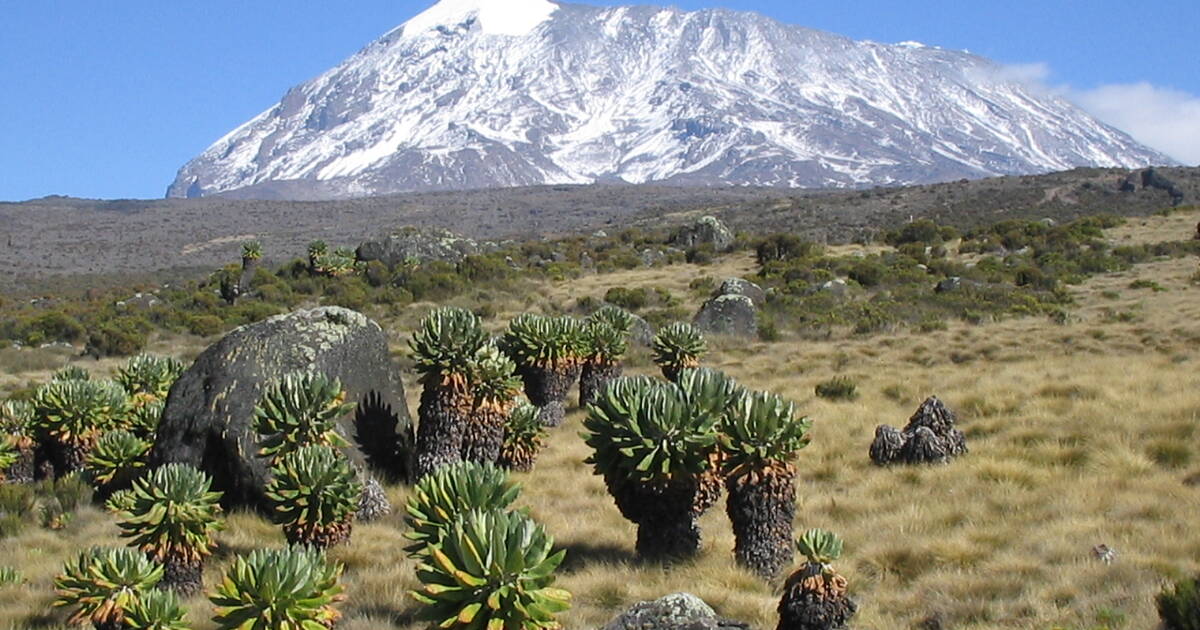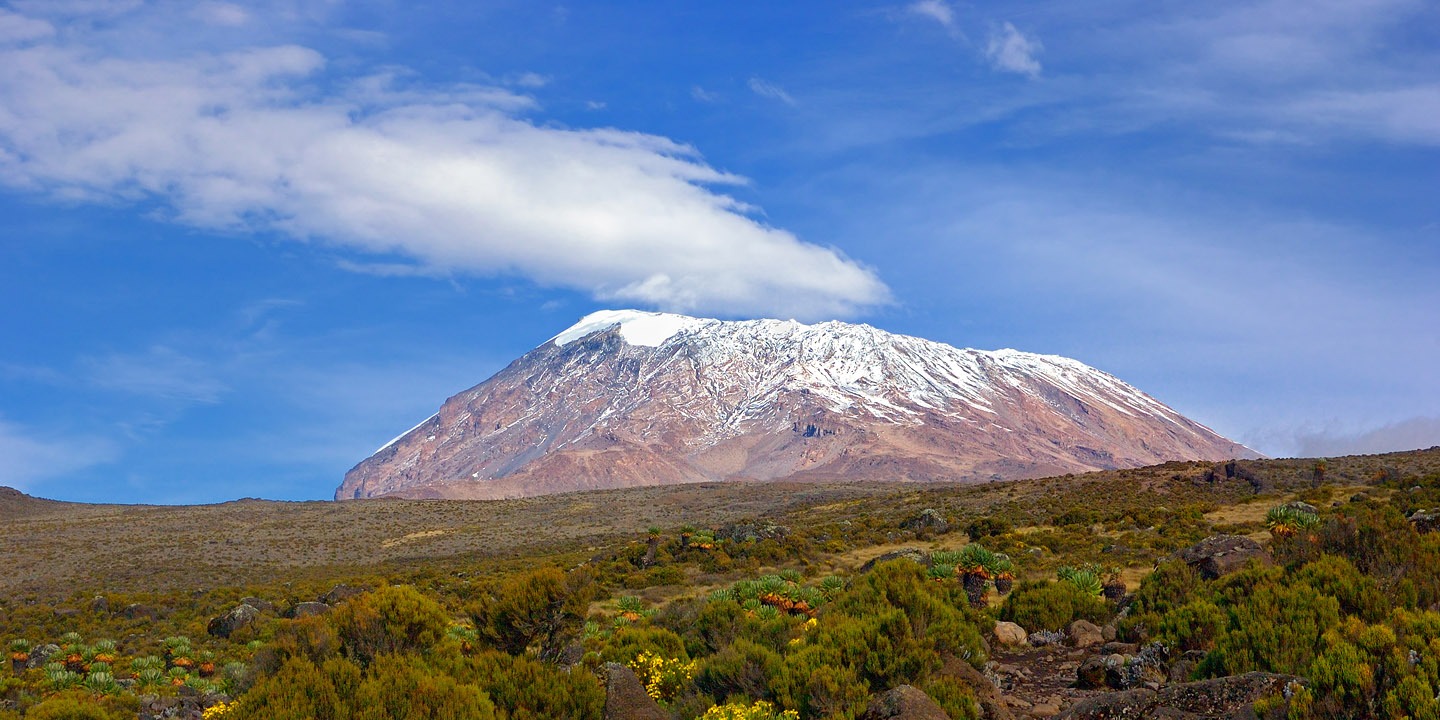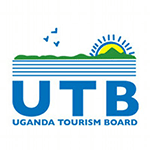Kilimanjaro National Park, Tanzania
Kilimanjaro National Park is one of Tanzania’s most visited parks. Unlike the other northern parks, this isn’t for the wildlife, although wildlife is there. Rather, it is to gaze in awe at a snow-capped equatorial mountain and to climb to the top of Africa. At the heart of the park is the 5896m Mt Kilimanjaro, Africa’s highest mountain and one of the continent’s most magnificent sights. It’s also one of the world’s highest volcanoes, and the highest free-standing mountain in the world, rising from cultivated farmlands on the lower slopes, through lush rainforest to alpine meadows, and finally across a barren lunar landscape to the twin summits of Kibo and Mawenzi. Kilimanjaro’s third volcanic cone, Shira, is on the mountain’s western side. The lower rainforest is home to many animals, including buffaloes, elephants, leopards, and monkeys, and elands are occasionally seen in the saddle area between Kibo and Mawenzi.

How to get there.
Fly into Kilimanjaro International Airport. Depending on your choice of the route up the mountain, you’ll drive 45km to either Moshi town or Arusha town, where you will begin preparations for your climb. Distances and times vary according to which route and gate you choose, and your tour operator will confirm all details.
Attractions at the Kilimanjaro National Park
The major attraction in Kilimanjaro National Park is Mount Kilimanjaro. Mt Kilimanjaro is the highest snow-peaked mountain in Africa with a height of 5896m.
A variety of animals can be found in the Kilimanjaro National Park such as the Kilimanjaro tree hyrax, the grey duiker, rodents, bushbuck, and red duiker. Cape buffalo, blue monkey, western black/white colobus, bush-baby, and leopards can be sighted in the montane forest while Elephants can be found between the Namwai and Tarakia rivers.
Climbing Kilimanjaro Mountain is a remarkable experience. The mountain has varied beautiful landscapes from a rocky, arid, and shrub, to the lower parts of the mountain which have a green forest landscape. You will discover the multiple habitats within the mountain, from farmlands, and rainforests to open Moore lands and the barren alpine bogs and desserts which lead to the snow peaks. When climbing the mountain, it is advisable to take your time and climb slowly so as to not burn out fast. Animals such as buffalo, elephants, red duiker, and bushbuck can be found in the park. Around the montane forest region, leopards, bush babies, white and black colobus, and blue monkeys can be found.
Beyond the mountain and landscape, there are waterfalls to see such as the Kinukamori waterfalls and Materuni waterfalls. The park is about a 60mins drive from Kilimanjaro airport. From Amboseli National Park you can have a view of Mount Kilimanjaro as a wonderful backdrop.

Rules while at the Kilimanjaro National Park
- Driving in the parks is allowed between 6 am and 6 pm only.
- The speed limit in the parks is 50km/h and 25km/h in the Ngorongoro Crater.
- Keep to the authorized tracks only.
- Do not pick, cut or destroy any vegetation or remove any object of biological interest, including eggs, bones and trophies.
- Camping is allowed only at designated sites.
- Always move with your guide
- Do not climb the mountain if it is a threat to your health
What to carry.
Comfortable shoes, warm clothes, a camera, and binoculars (optional).
Accommodation
- Ndarakwai Camp
- Shu’Mata Camp
- Kilimanjaro Mountain Resort
- Kia Lodge





